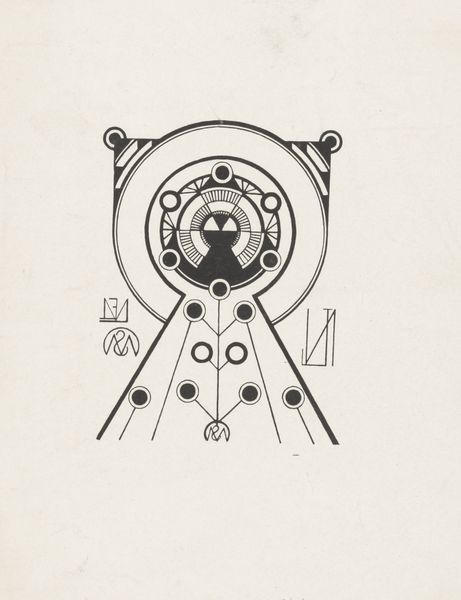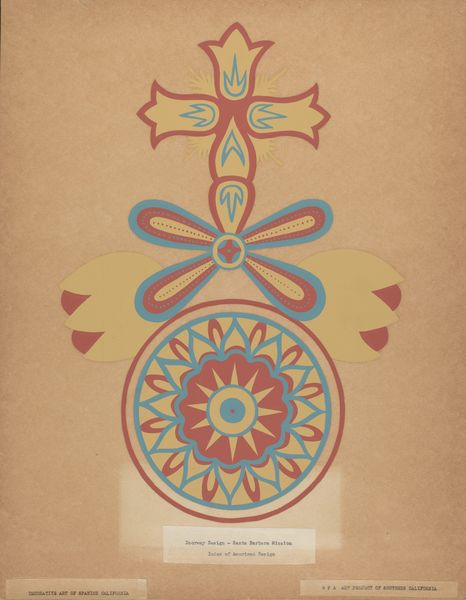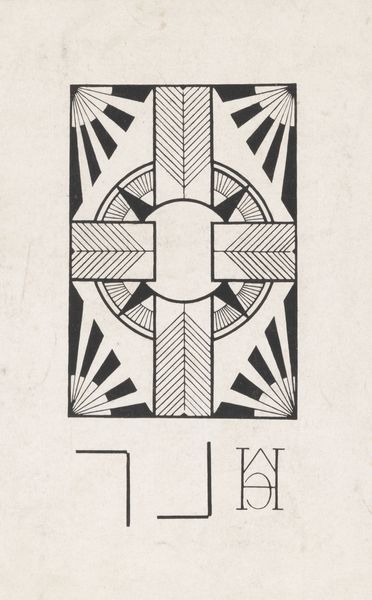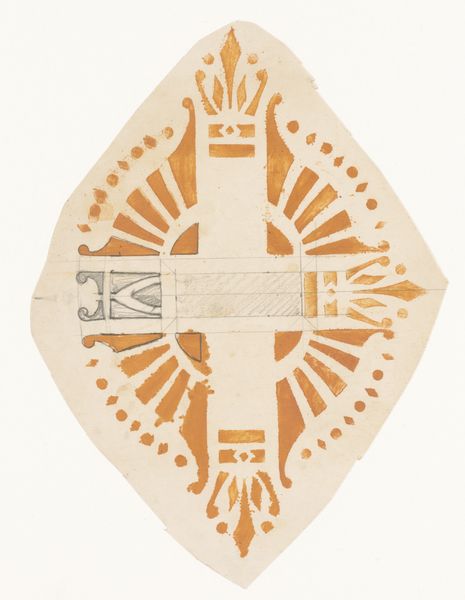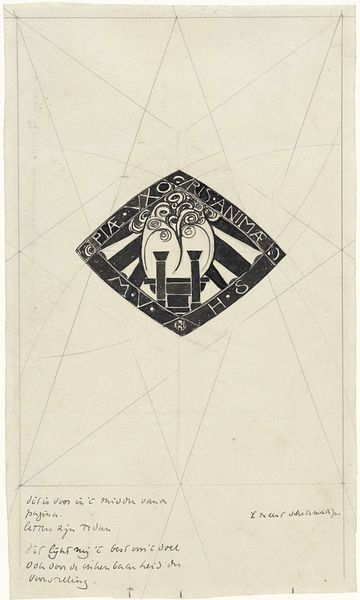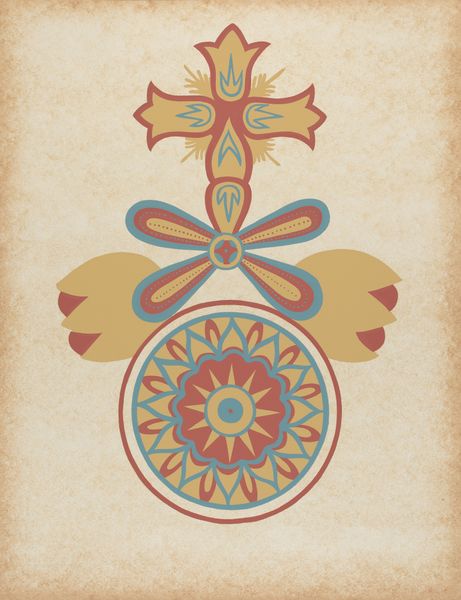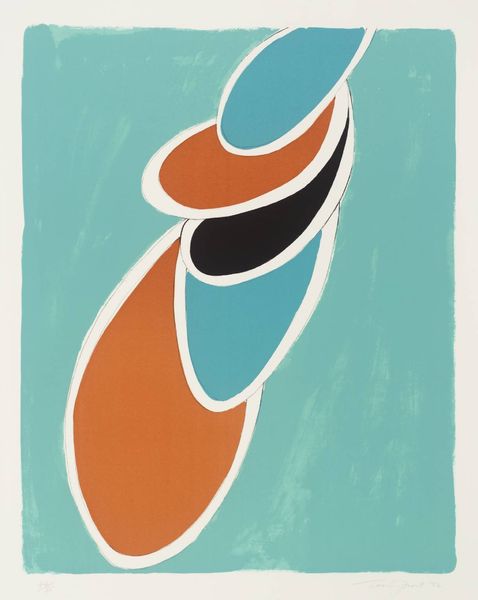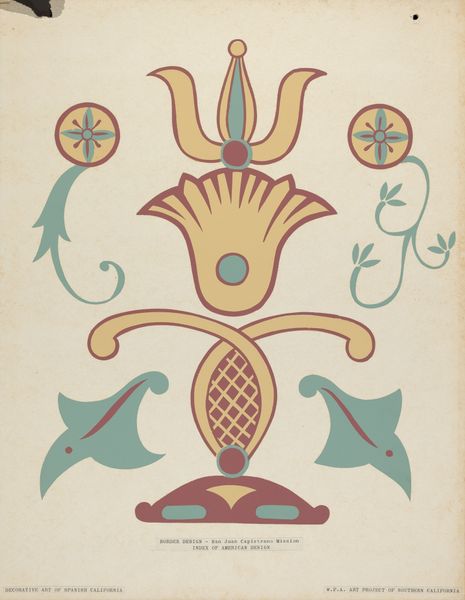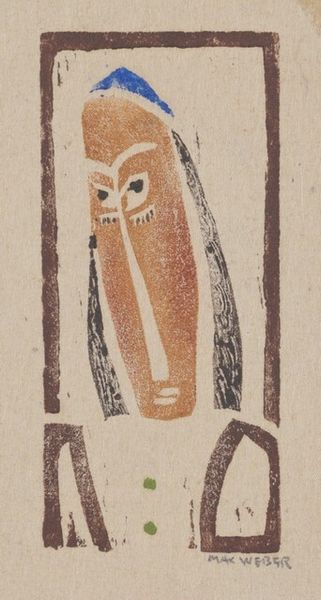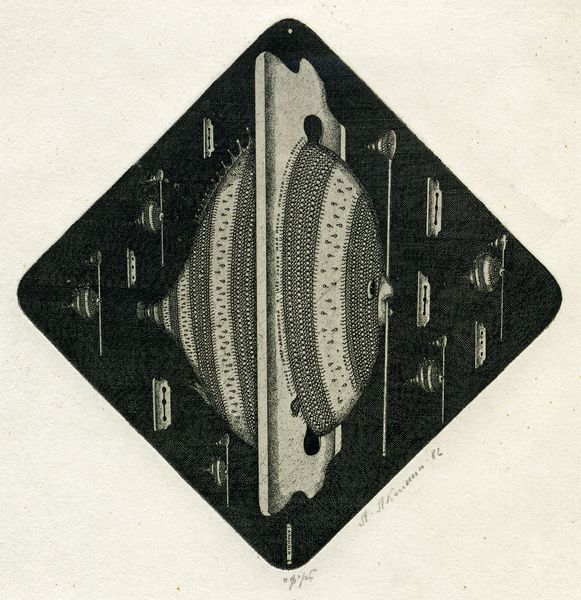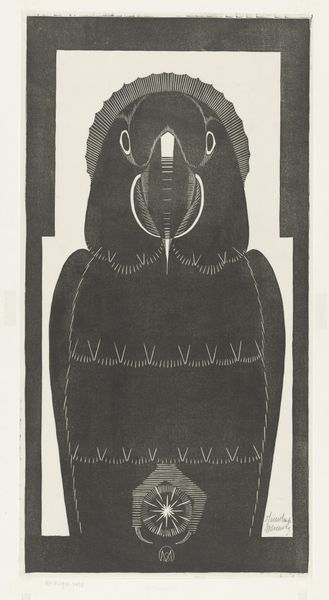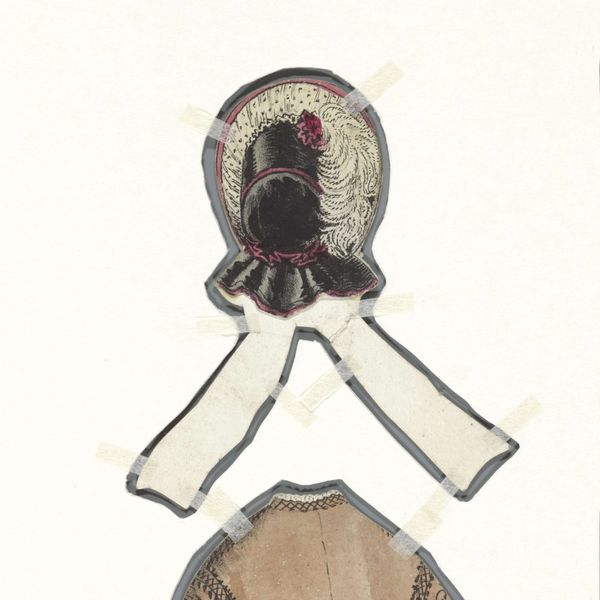
drawing, print, woodcut
#
drawing
# print
#
abstract
#
form
#
geometric
#
woodcut
#
line
Dimensions: height 209 mm, width 125 mm
Copyright: Rijks Museum: Open Domain
Editor: This is “Schild,” a woodcut print by Reijer Stolk, created before 1942. The image, composed mainly of lines and geometric forms, feels a little unsettling. It's hard to put my finger on why. What do you see in this piece? Curator: The abstract nature, combined with the title "Schild," or "Shield," invites a consideration of protection, perhaps on a symbolic or even psychological level. Given that it was created before 1942, do you think it is possible that it relates to anxieties surrounding World War II? Editor: That's interesting! The idea of anxiety definitely resonates. I hadn’t considered it in relation to a specific historical moment, only on the emotional level. I guess I saw "abstract" and didn't immediately think about historical context. Curator: Abstraction isn’t divorced from social realities. Look at the stark contrast of colors, the seemingly totemic central figure, the repetition of line... Could this be read as a commentary on the rise of totalitarian regimes, which threatened individual identity? Editor: It’s possible! The shield shape could be about defense, but the exposed interior is interesting. If it’s a defense against totalitarianism, maybe it suggests the cracks in that defense, that nothing is ever fully protected. It would be amazing if he put such a contemporary theme at that time! Curator: Precisely. This highlights the importance of analyzing art through the lens of socio-political context. Reijer Stolk invites us to consider the vulnerability of individual expression, as well as question the presumed stability of protection. What kind of identity is expressed in this painting? Editor: I'm really seeing it differently now. The idea that the artist might have created the image as a response to political conditions makes it so much more powerful. Curator: Indeed. By intertwining aesthetic appreciation with historical awareness, we can enrich our understanding of art as a powerful means of dialogue and critique.
Comments
No comments
Be the first to comment and join the conversation on the ultimate creative platform.

